Taking the Lemons and Making Some Dam Lemonade (A Project Journey in Photos)
Sometimes projects don’t go as planned. Sometimes they go sideways really fast. Sometimes those unexpected detours turn out to be a blessing in disguise. This is the story of one such project.
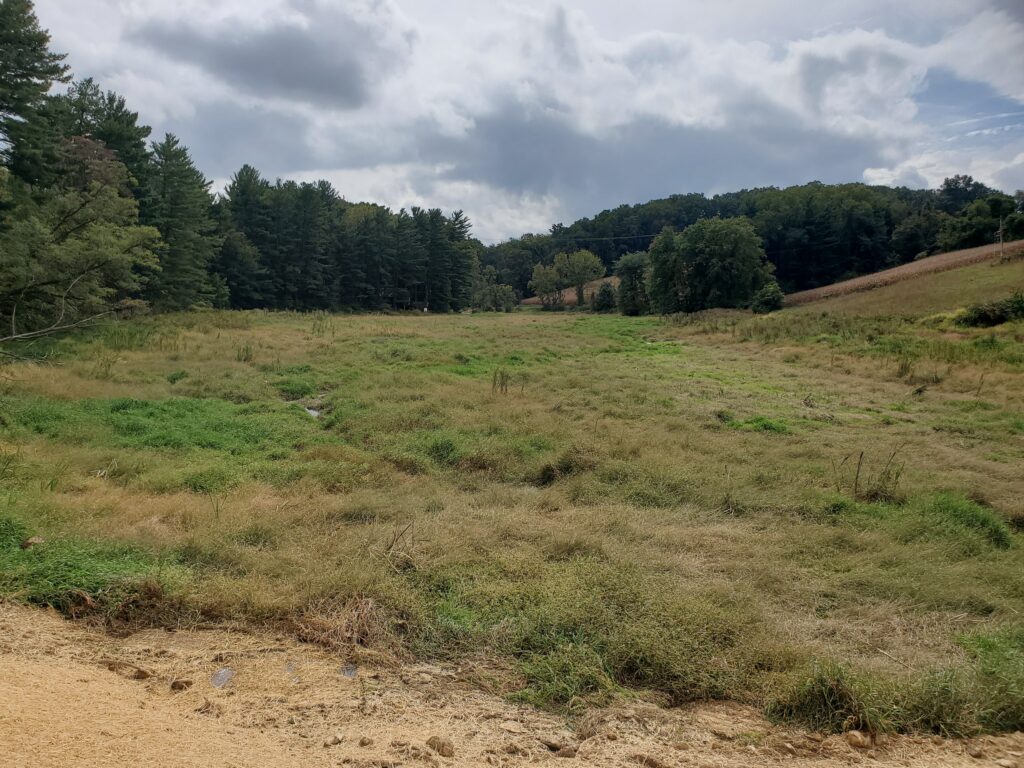
Sometimes projects don’t go as planned. Sometimes they go sideways really fast. Sometimes those unexpected detours turn out to be a blessing in disguise. This is the story of one such project.
Meet Kehm Run Dam in York, Pennsylvania.
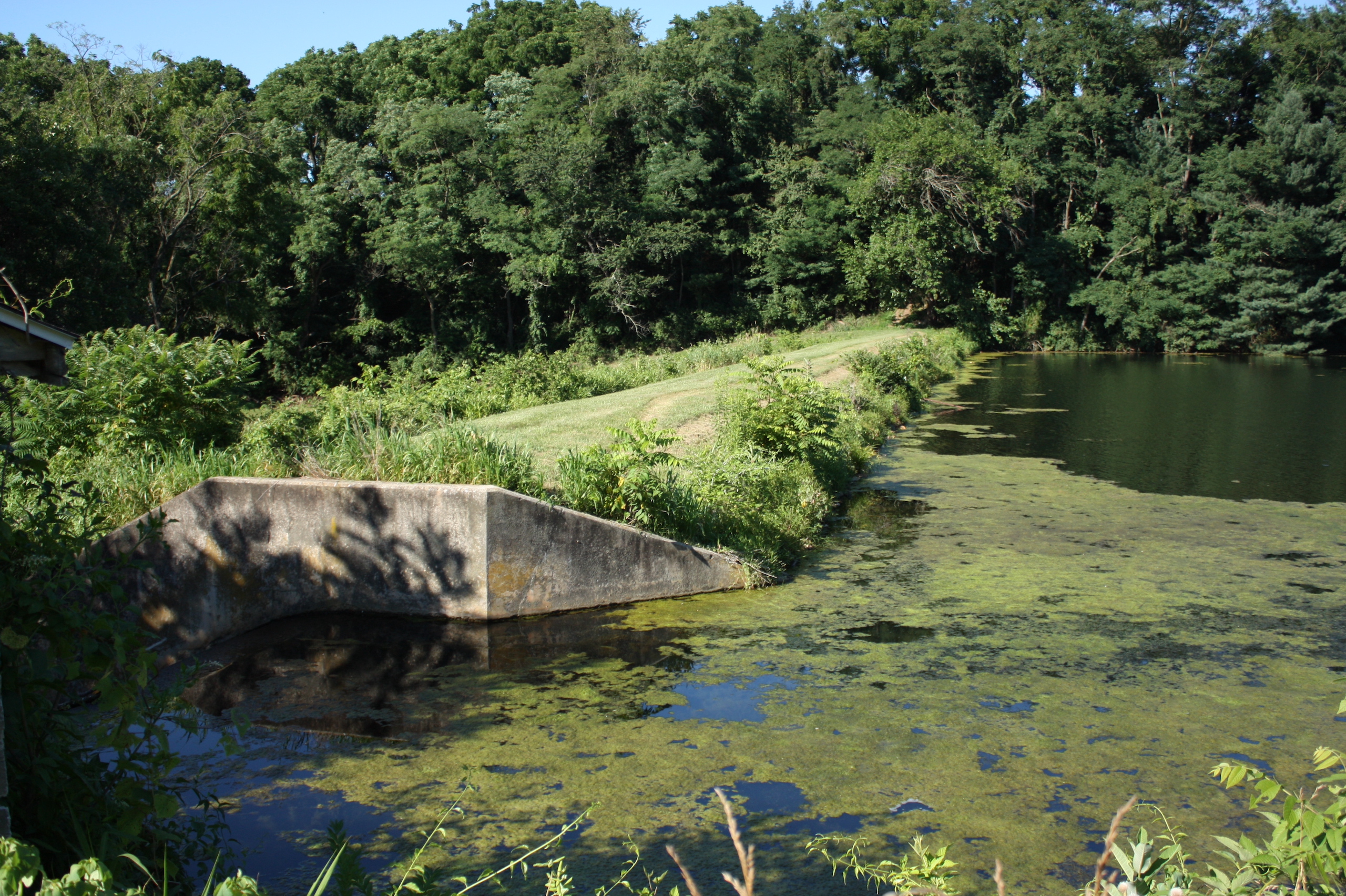
Kehm was a mostly earthen dam with a concrete spillway. Here’s the spillway from the upstream side.
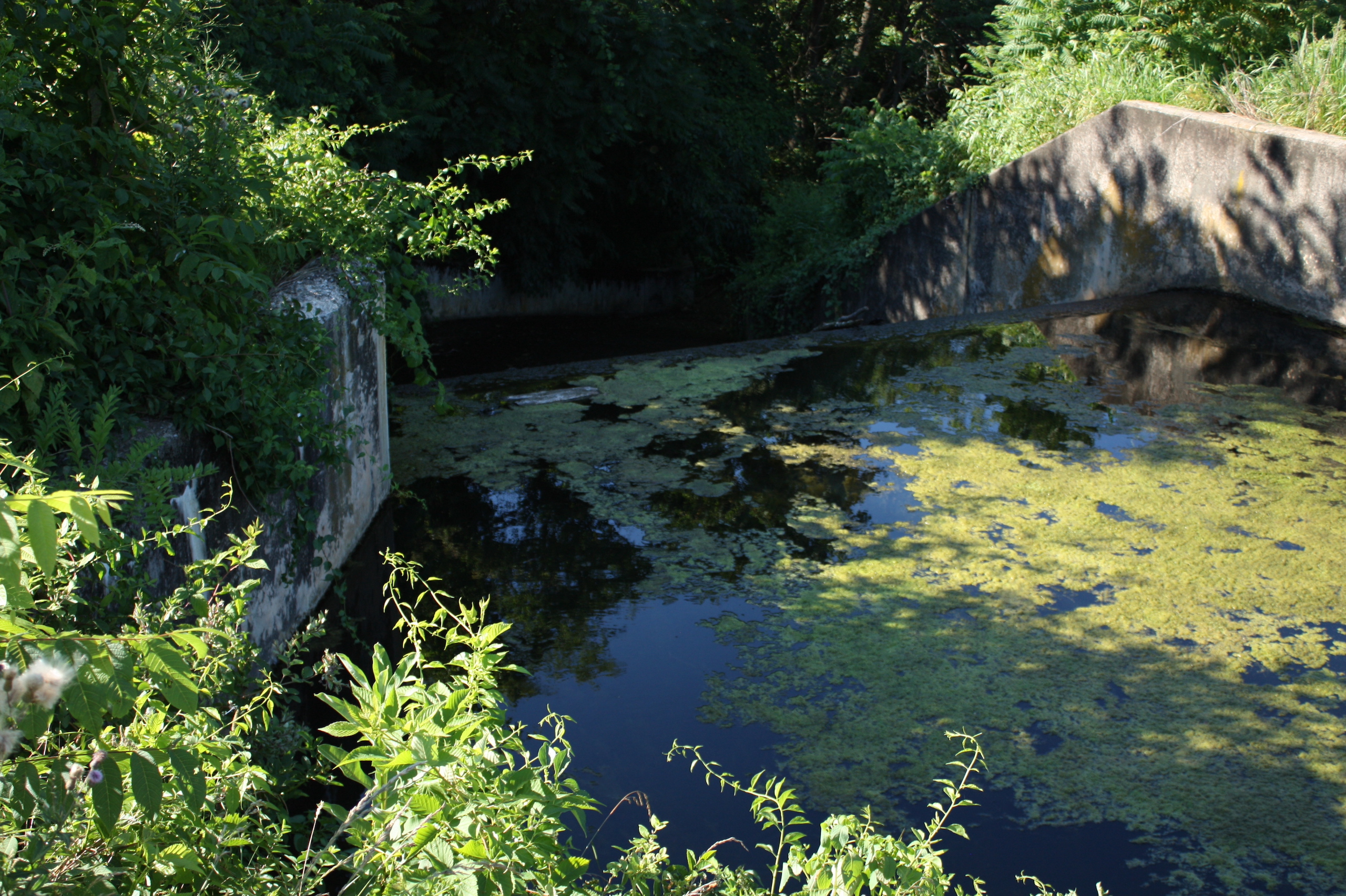
There’s also a smaller weir on the upstream end of the impoundment pictured below.
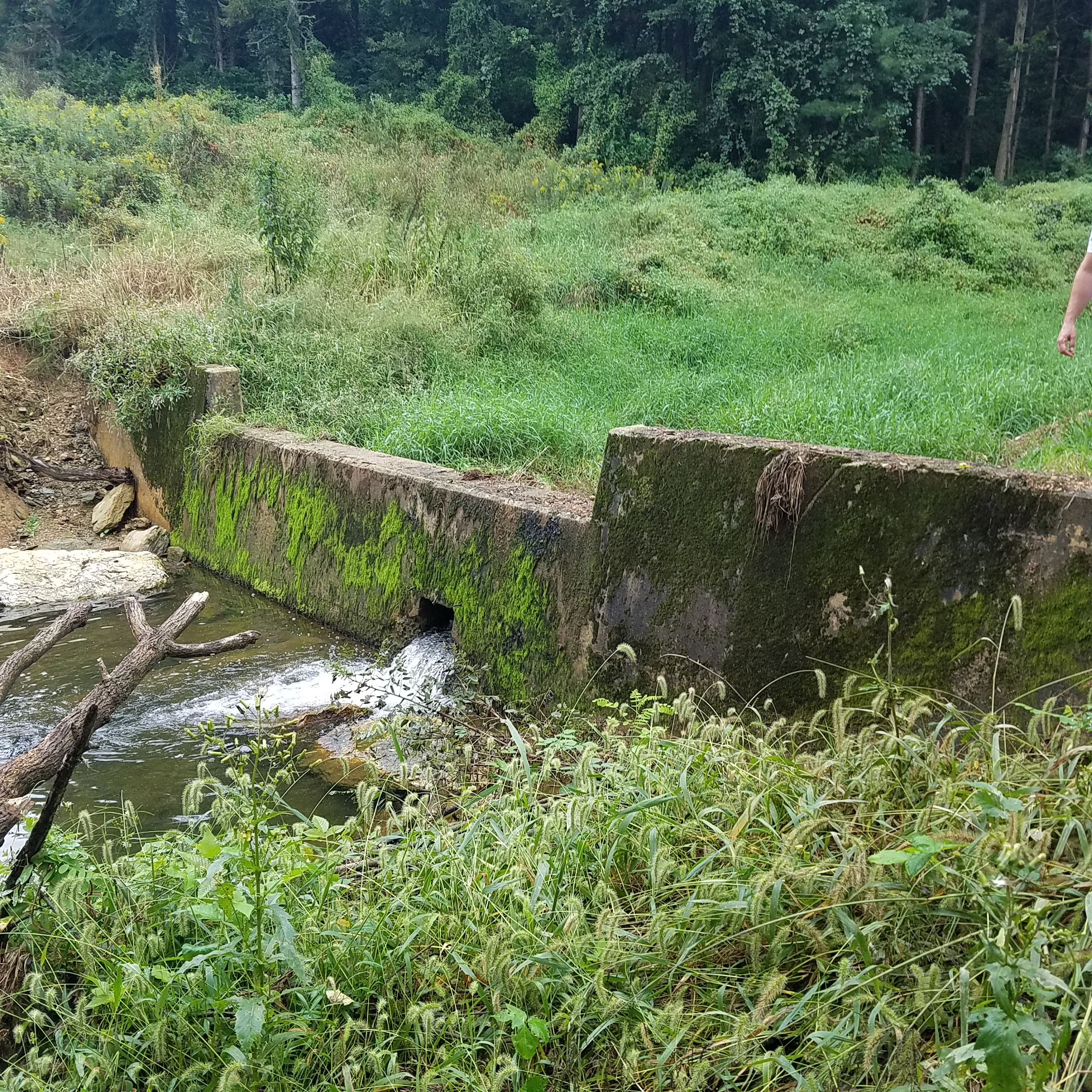
Kehm sits in the middle of some agricultural fields that are otherwise surrounded by encroaching development. Here’s an aerial view.
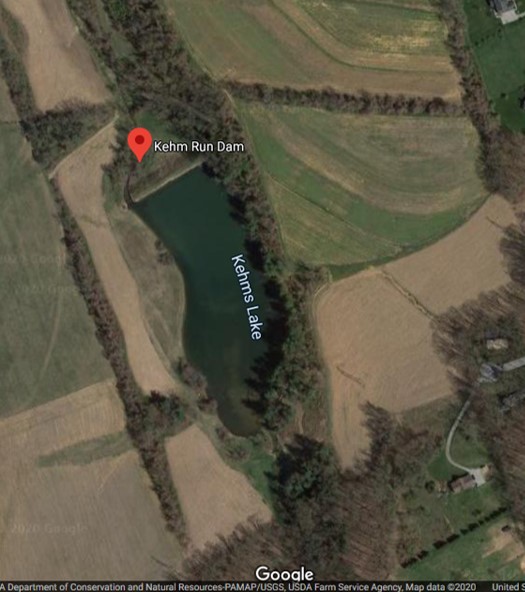
It turns out the site is a bit of a diamond in the rough. Like many areas, what was once a rural community in York has filled in with houses and other development. Here, there are still farm fields which makes it a unique place to visit.
Let’s rewind back to 2015— The owners of Kehm Dam receive a letter from PA Department of Environmental Protection’s Dam Safety Program notifying them that their dam is deficient according to state regulations. They must either fix it or remove it. This dam formed a lake used for recreation, but it hasn’t been used as much in recent years as kids have grown up. Here’s a look at the impoundment and a little weekend getaway spot on the lake.
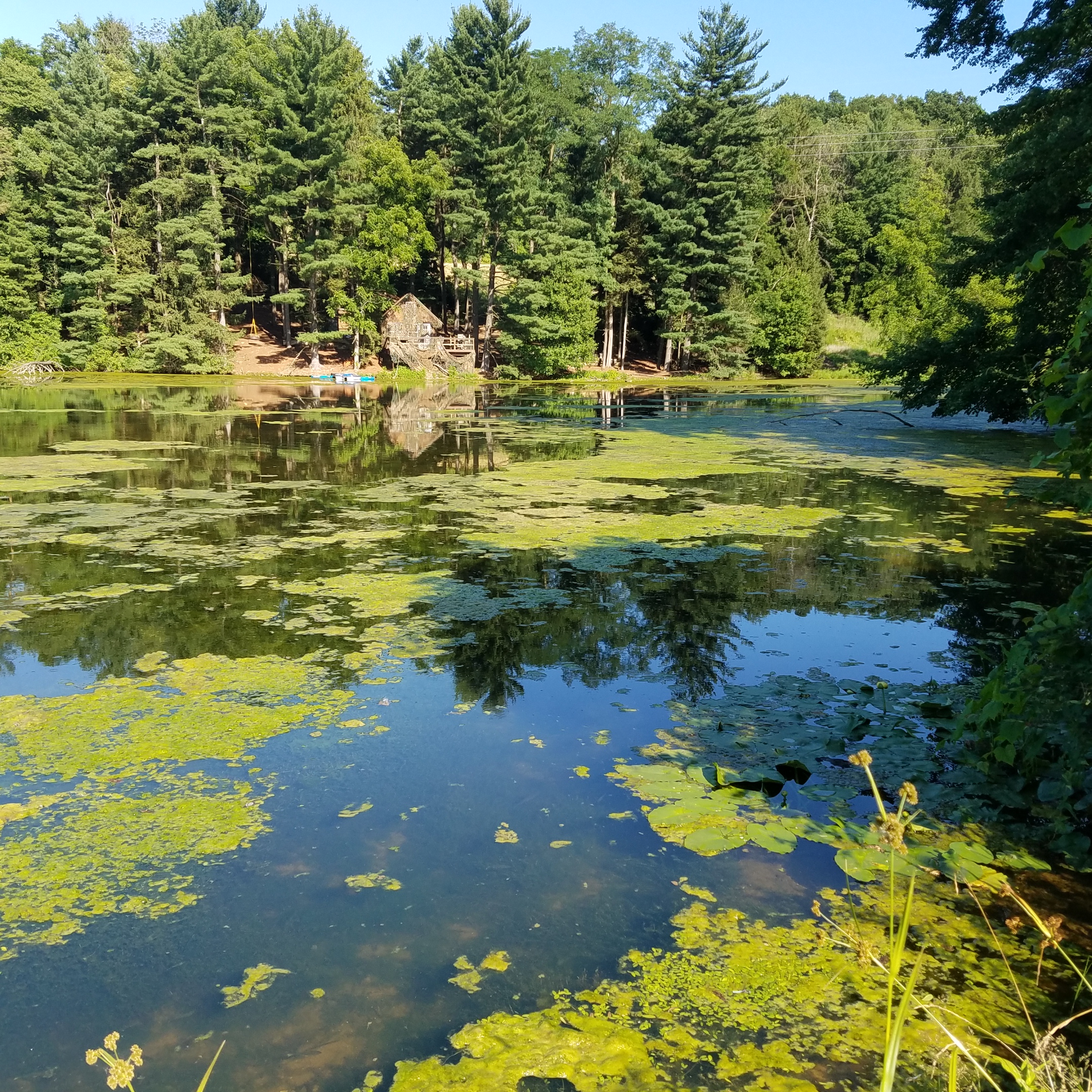
At some point in the past, a family member plugged up the pipe used to drain down the impoundment. It turns out that people need to be able to drain their impoundments these days in case of an emergency, so something had to be done. The owners decided to remove the dam because the cost of repairs would be too much— a conclusion many dam owners come to when faced with the reality of owning aging infrastructure.
American Rivers became involved in the project to help alleviate pressure from the owners who are not otherwise experts on dam removal. For more than 20 years, American Rivers has been working throughout PA to restore healthy river flow and function for the benefit of people and nature. There are more than 3,800 dams throughout the Chesapeake Bay Basin, very few of which provide water supply or flood control benefits. Many of these dams are smaller, older structures that no longer serve a purpose and have potentially become unsafe. This is the case with Kehm Run Dam, the removal of which will benefit resident fish and other aquatic species and reconnect one mile of habitat upstream. This project, like our past work in PA, is intended to provide both ecological and community benefits including improvements to public safety, habitat connectivity, natural ecological function, biodiversity and climate change resilience. Rivers thrive when they’re allowed to move sediment naturally, develop and provide physical habitat for aquatic life, and cycle nutrients in a natural way to support a thriving native ecosystem.
Throughout 2017/2018— We raise funds for what is to become the first phase of the project (thank you to PA Fish and Boat Commission and PA Department of Environmental Protection’s Growing Greener Program).
September 2018— We hire an engineering firm, Princeton Hydro, and navigate through the bumpy road of design and permitting.
Kehm Dam Removal Construction Phase 1
September 2019— Finally, we have permits in hand (a restoration waiver from PA Dam Safety and a drawdown permit from PA Fish and Boat Commission). The project is permitted with a passive sediment release approach for sediment management (this becomes relevant later on). We bid the project for construction. The bids come in. High. Why are they so high? We based our projected costs on an early bid done by one of the owners (no longer living). It turns out that bid did not include removing the whole dam or any of the pipe running through the entire impoundment. We did not realize this ahead of time.
What to do…
Well, we have enough funding to breach the dam, remove the concrete spillway, and remove the upstream weir. Then we will allow the river to find its path and the system to adjust. We can go back after we raise some additional funds to do more work on the site once we see what is truly necessary. Okay, we have a plan.
Here’s what the impoundment looked like before construction from what I will call Point A on the edge of the earthen dam looking upstream.
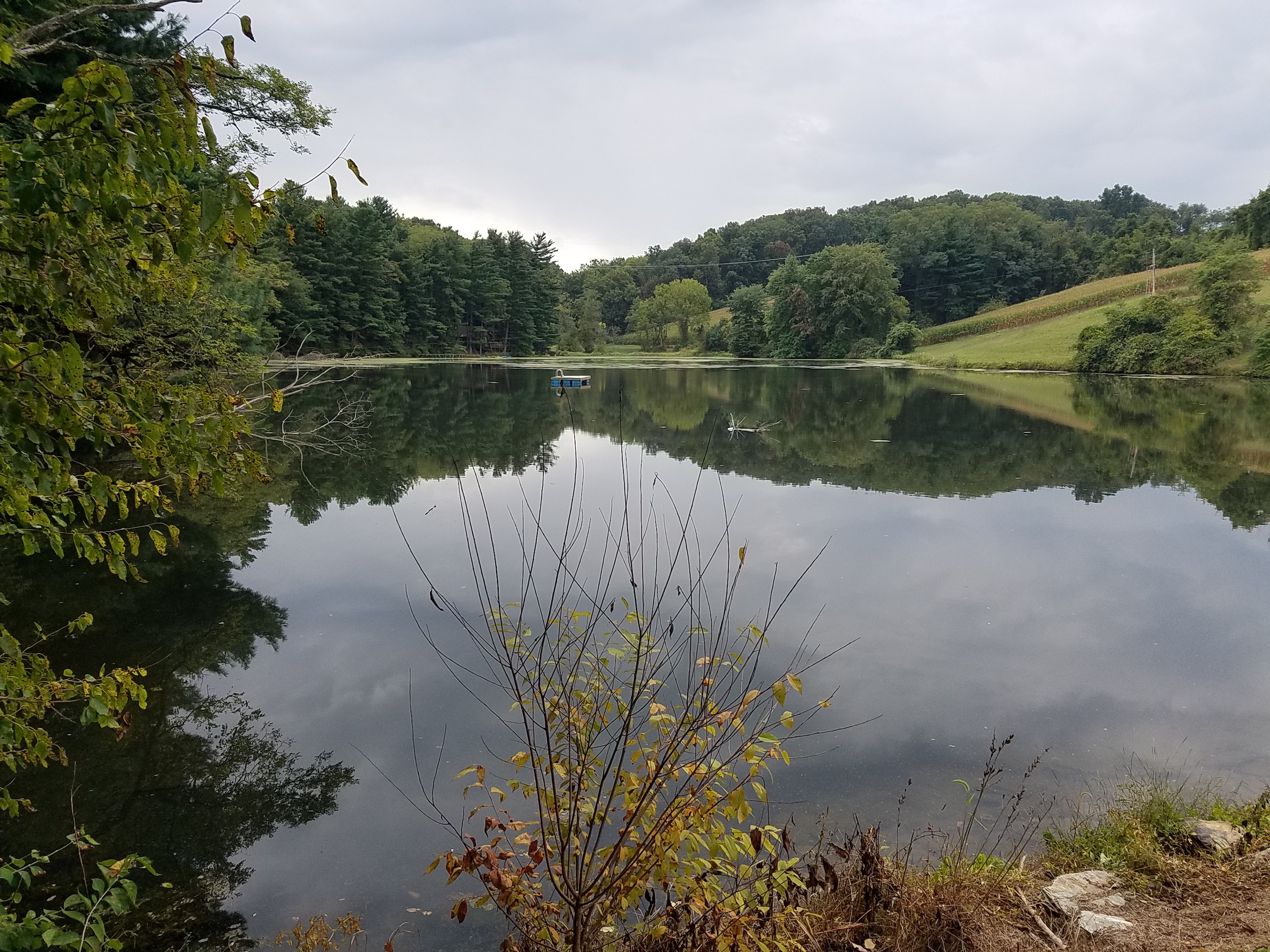
January 2020— Construction begins. I am 8 months pregnant. This site has some steep hills. I don’t feel as though this picture truly captures how out of breath I was walking up these hills, but it’s all I have.
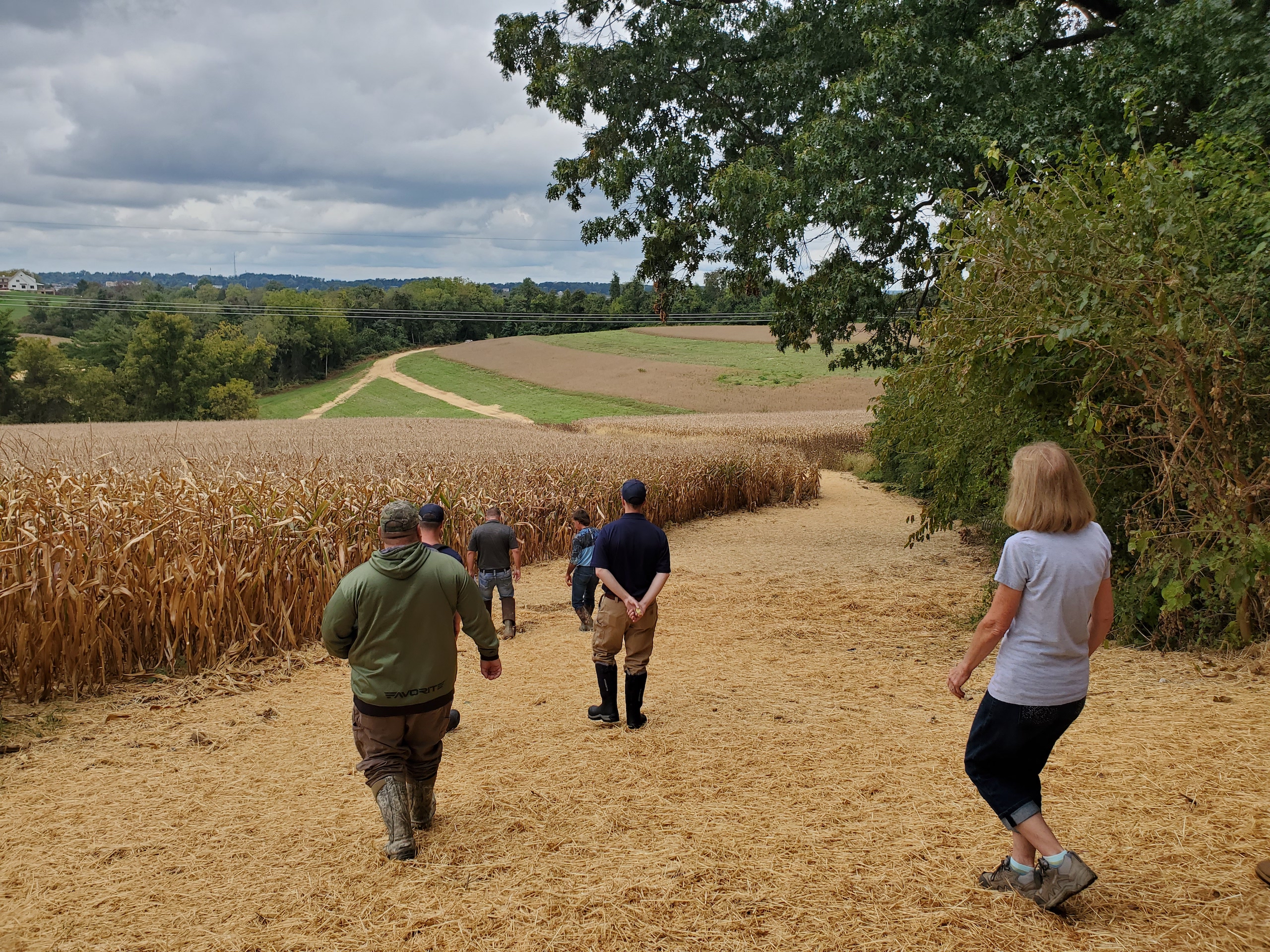
They started by pumping the water out of the impoundment with a pump machine. The water was pumped from the impoundment into the stream below the dam. Here’s how things were looking from Point A during the pump down.
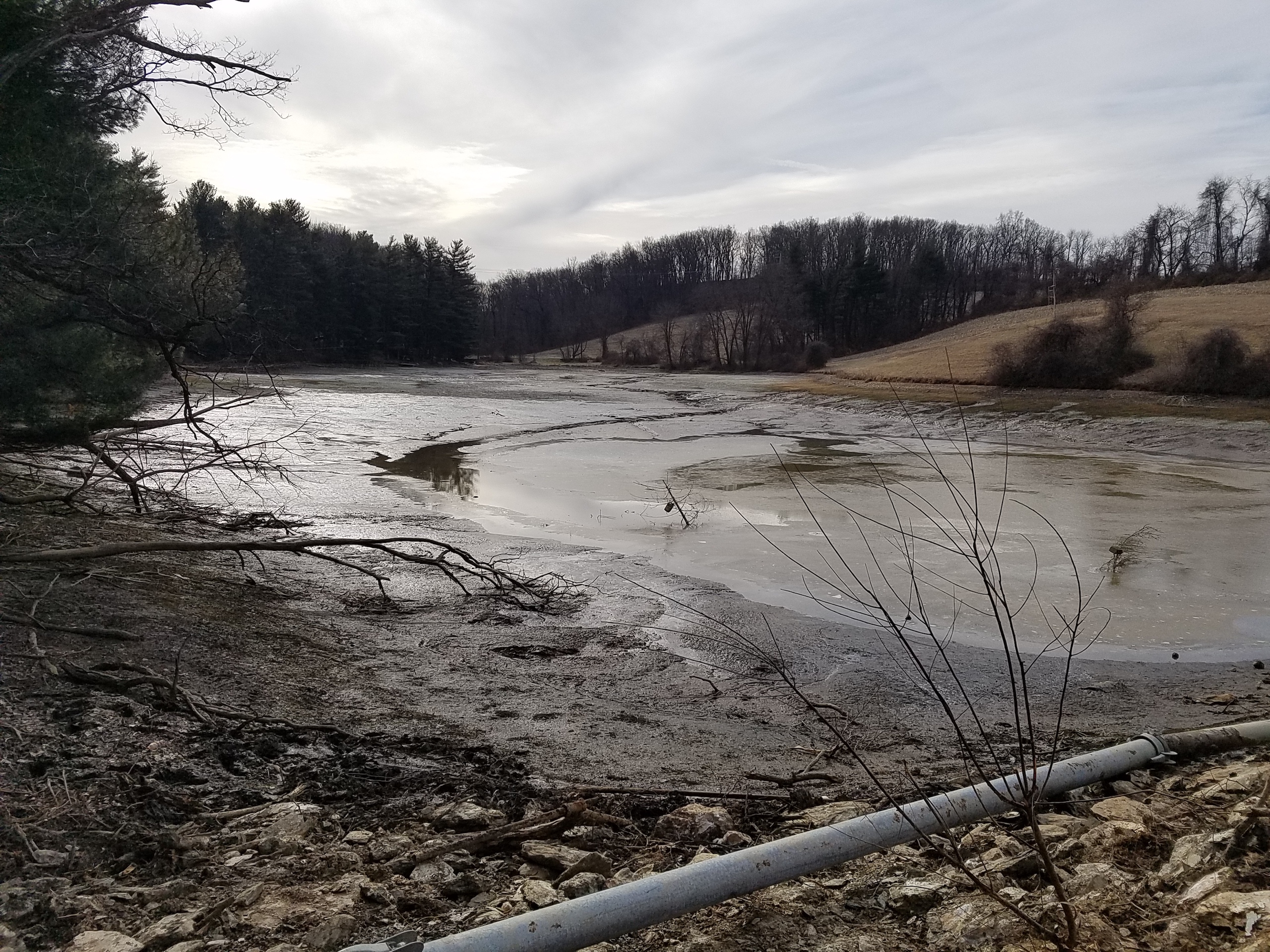
Next, they removed the concrete spillway with a hydraulic hammer on an excavator. This image shows the breakdown process which happened pretty quickly—only took a few days.
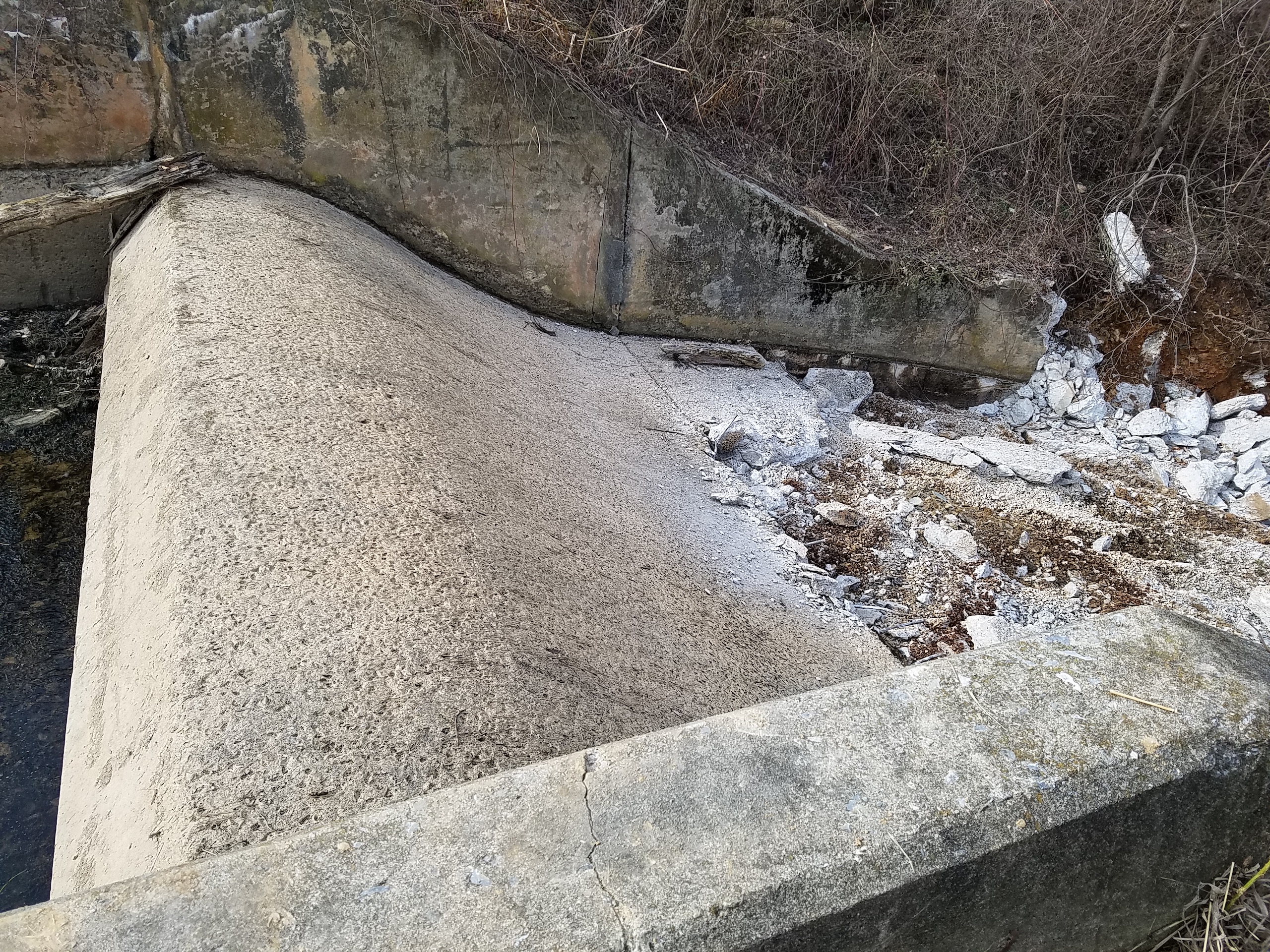
By February, the upstream end of the impoundment was looking more or less as expected. There was a lot of submerged aquatic vegetation up there (hence the lumpiness). At this point, the stream is still flowing into the impoundment, but it doesn’t have a strong path through this vegetation.
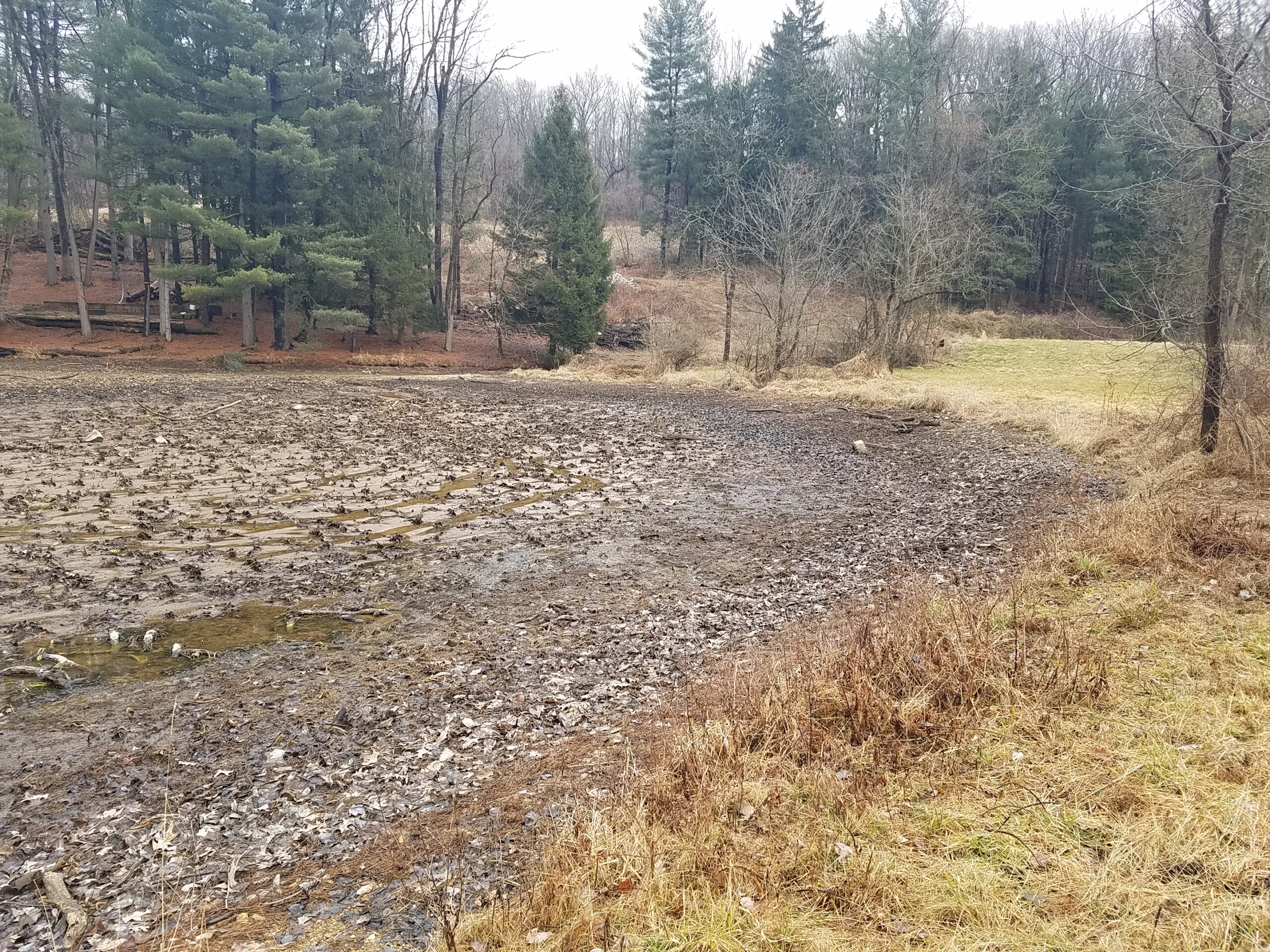
Down by the dam, we have some ponding as the pump tries to keep up with moving the water from one side of the dam to the other.
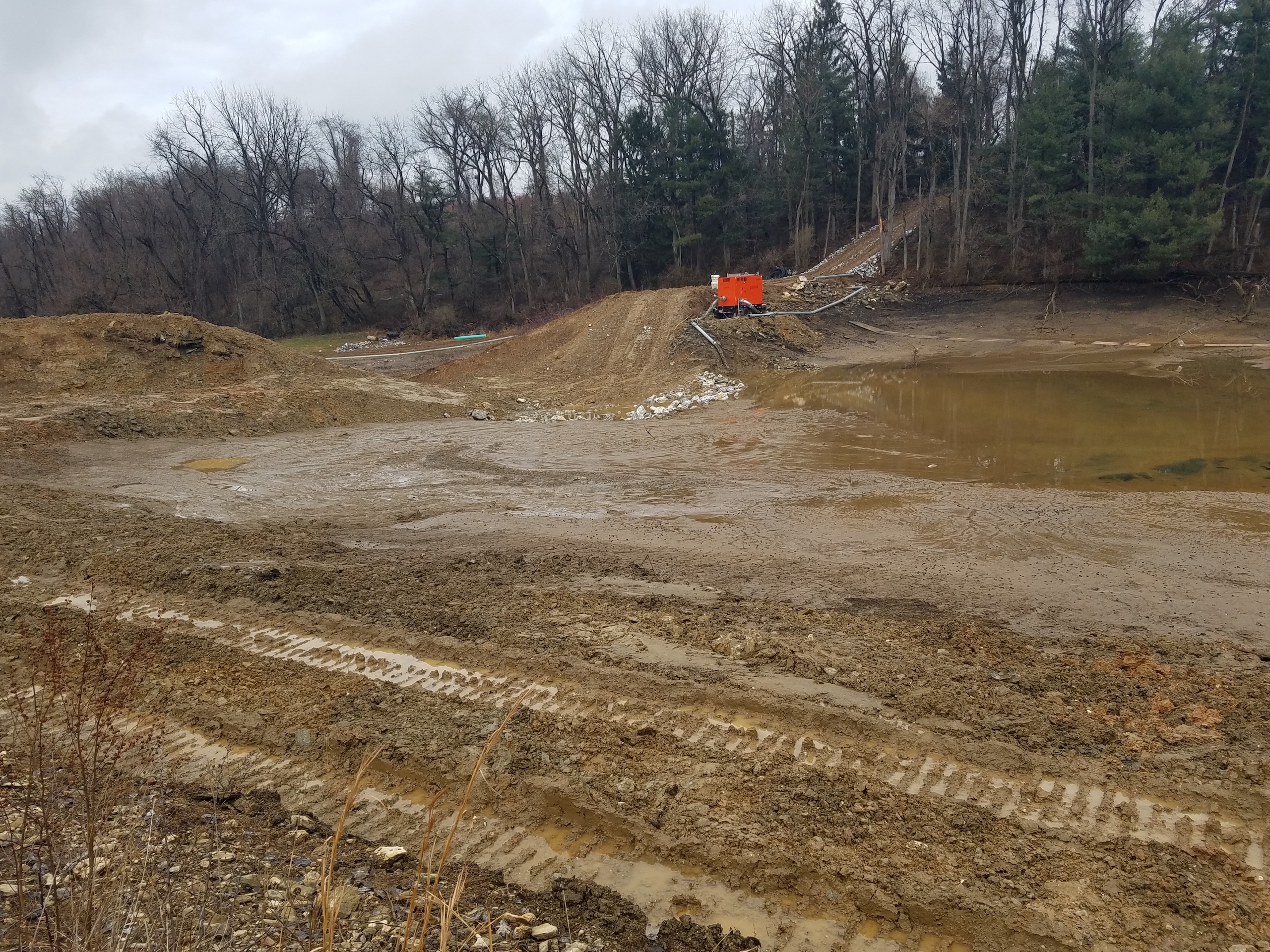
It’s becoming clear that we have a lot of sediment on our hands. This isn’t unexpected for a farm pond. Here’s a look at the impoundment.
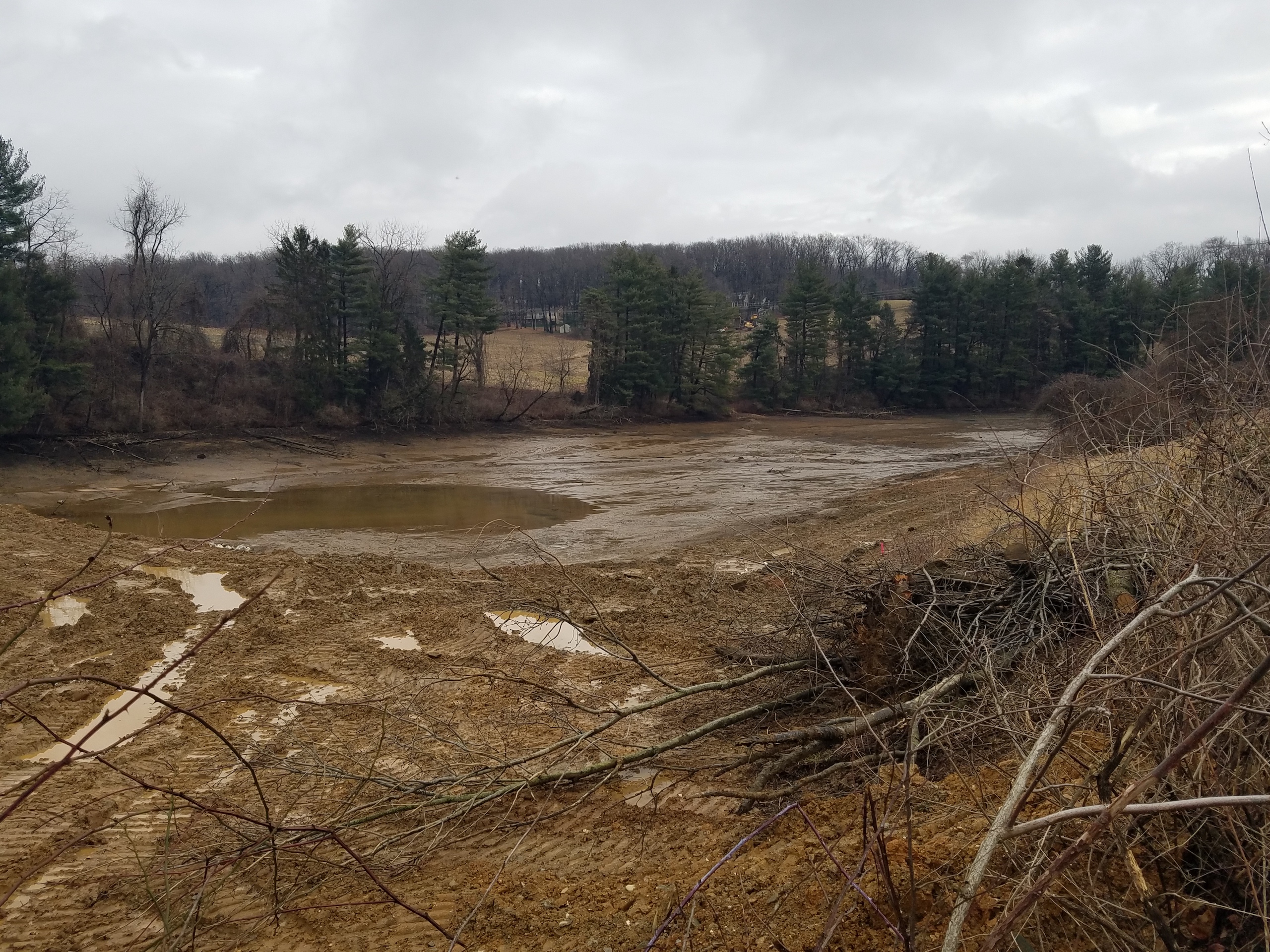
PA Department of Environmental Protection thinks there is more sediment here than what was approved under our permit. They order us to stop work on the dam breach before it reaches its final elevation in order to keep sediment from going downstream.
Okaaay. Now what do we do? To sum up the situation:
1) We aren’t allowed to finish breaching the dam.
2) The concrete spillway is already demolished
3) The drawdown pipe is not functional
4) We can’t just electronically pump water out of the impoundment forever
5) You can’t excavate mud soup….we tried…
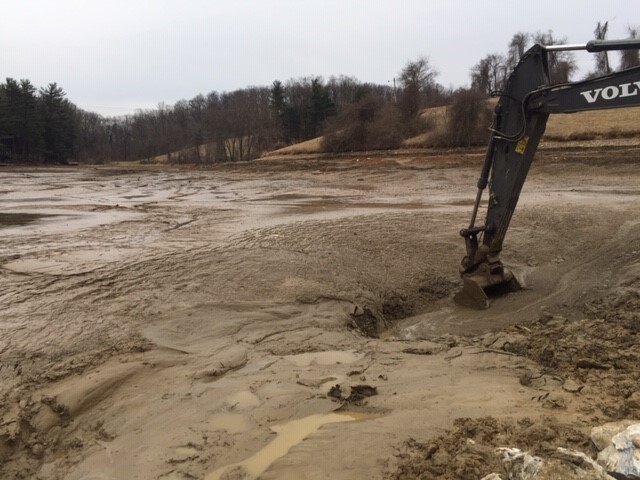
We had extensive discussions with the engineers and dam safety about how we could temporarily fortify the breach to allow the impoundment time to dry out and stabilize the sediment. In the meantime, Flyway Excavating (the construction contractor) continues to work through on-site problem-solving strategies. They have a breakthrough! They found the end of the pipe that drains the impoundment and have extracted the concrete plug. We can use the pipe to convey the stream from one end of the impoundment to the other without pumping. <Sigh of relief> Here’s the elusive pipe.

We armor the breach with a temporary rock patch to provide protection during storm events, and the river is conveyed through the impoundment pipe. Here’s the near-final temporary breach.
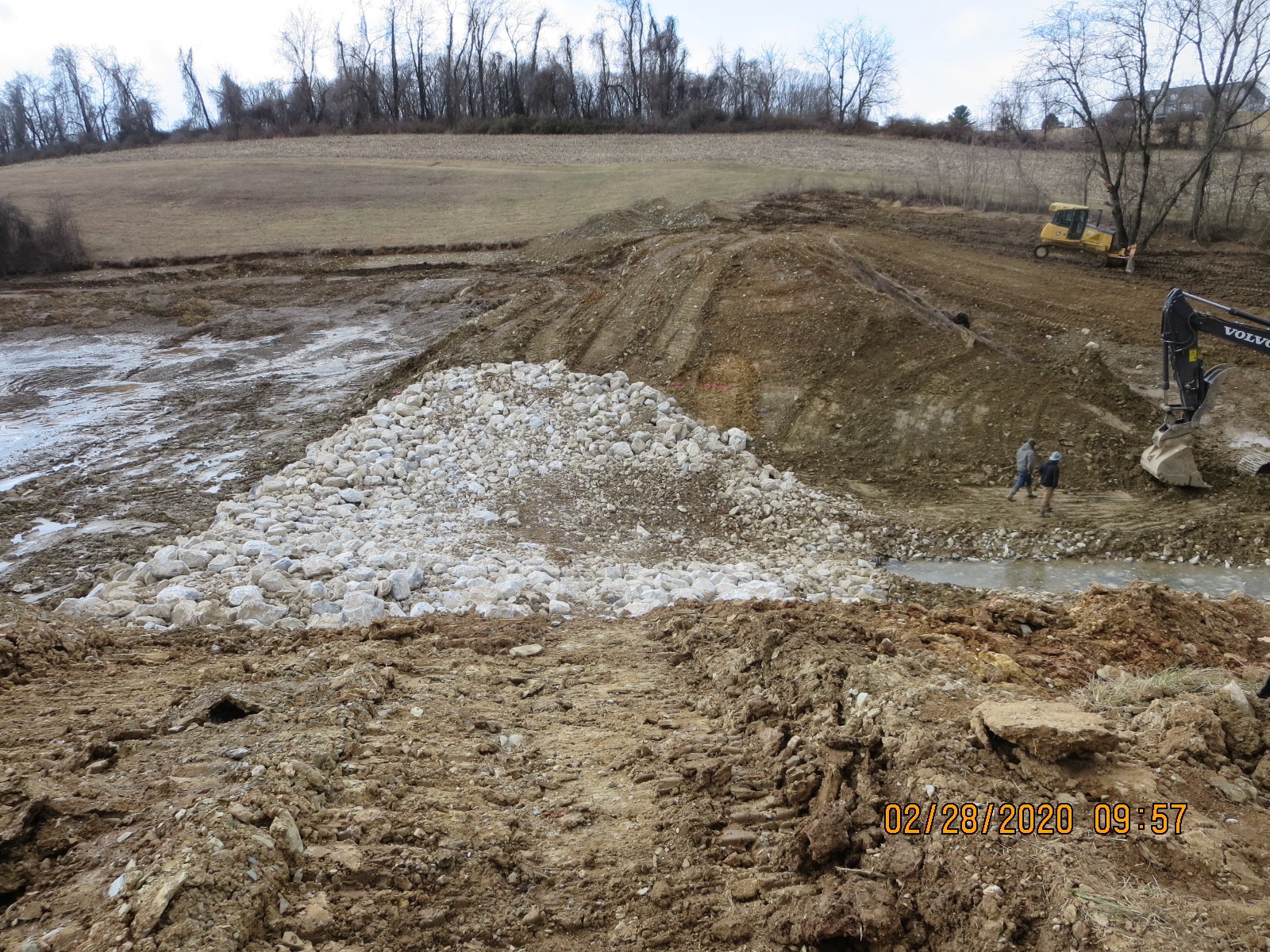
I have my baby a few days later. Yay! (Nothing like last-minute stress!)
Kehm Dam Removal Phase 2
Fast forward to July 2020— I’m back! Baby is doing well! It turns out the site is doing well also. Nature is so resilient. No more “mudflat” in just a few months (with no planting!). Here’s a photo from Point A rotated a bit to include the breach.
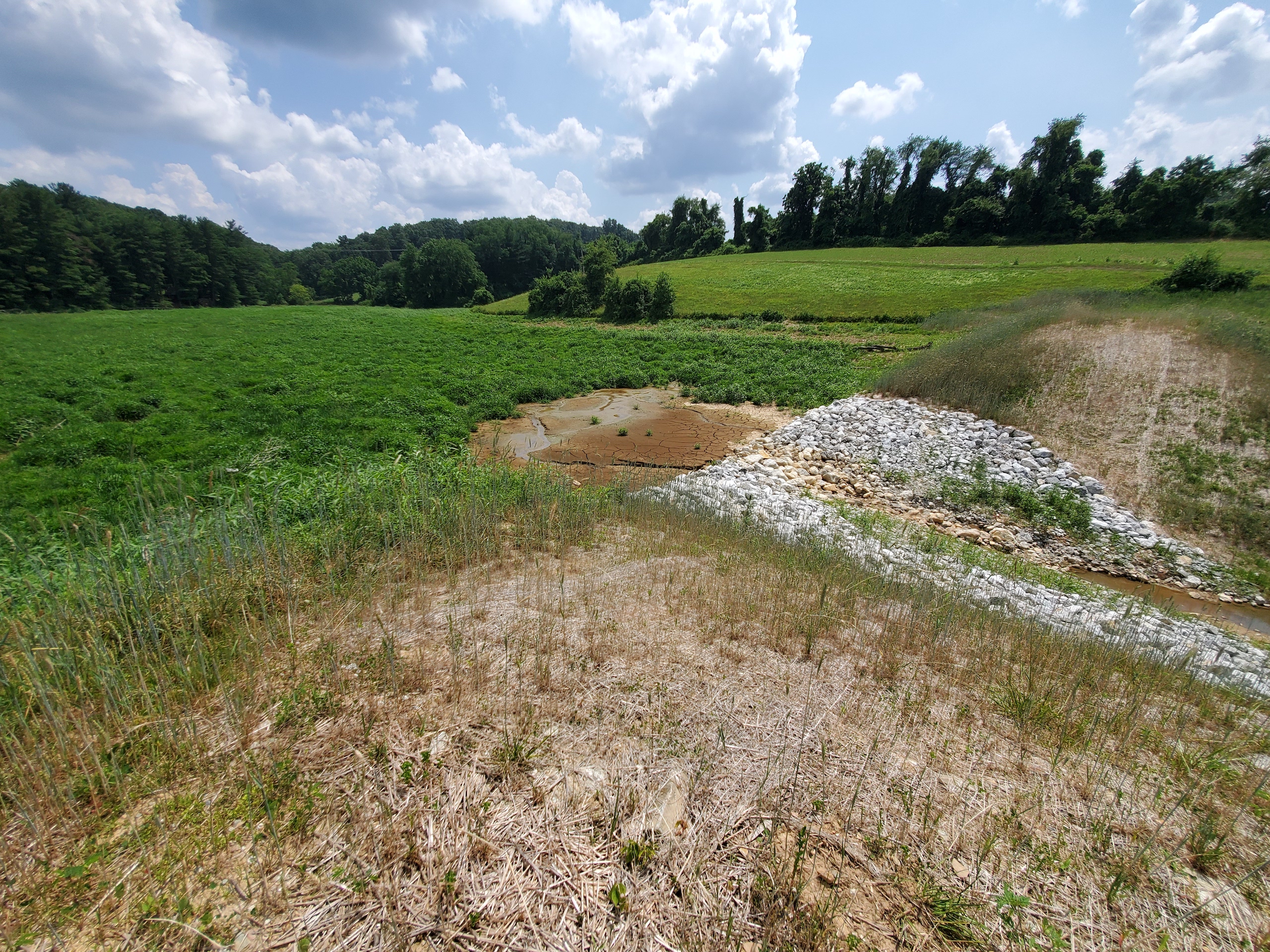
We’ve also solved the mystery of the perceived increase in sediment volume in the impoundment. It turns out a math error was made on the design plans for where the bottom elevation should be, making it look like more sediment would evacuate based on the top of sediment elevation. We move on to design Phase 2 of the project to complete the dam breach and remove the upstream weir.
In the meantime, I’ve run out of money. If you’ll remember—we didn’t have enough in-hand to do the full project construction, then we had increased costs with the temporary breach situation.
Enter new best friend Pam Shellenberger with the York County Planning Commission. On a whim, Pam invites Pierre MaCoy with the Susquehanna River Basin Commission (SRBC) for a site visit. Pierre falls in love with the site. Remember—it’s a diamond in the rough of York, PA. Pierre sees the site’s potential. He works with his colleagues at SRBC and they are able to arrange to fund Phase 2 construction. Whew!
We acquire approvals for the Phase 2 plans and we go to construction in September 2021. It’s a time crunch, due to weather and the impacts of manufacturing delays on the construction industry. But we squeak in the site work before the October 1 instream construction restriction deadline.
Here’s a look at Point A before Phase 1 and then after Phase 2.
Here’s a look across the dam before Phase 1 and then after Phase 2.
The dam breach area will fill back in with vegetation over the next growing season and look more like it did between Phases 1 and 2. This photo is from that same spot after Phase 1 (taken August 2021) to give an idea of what will happen.
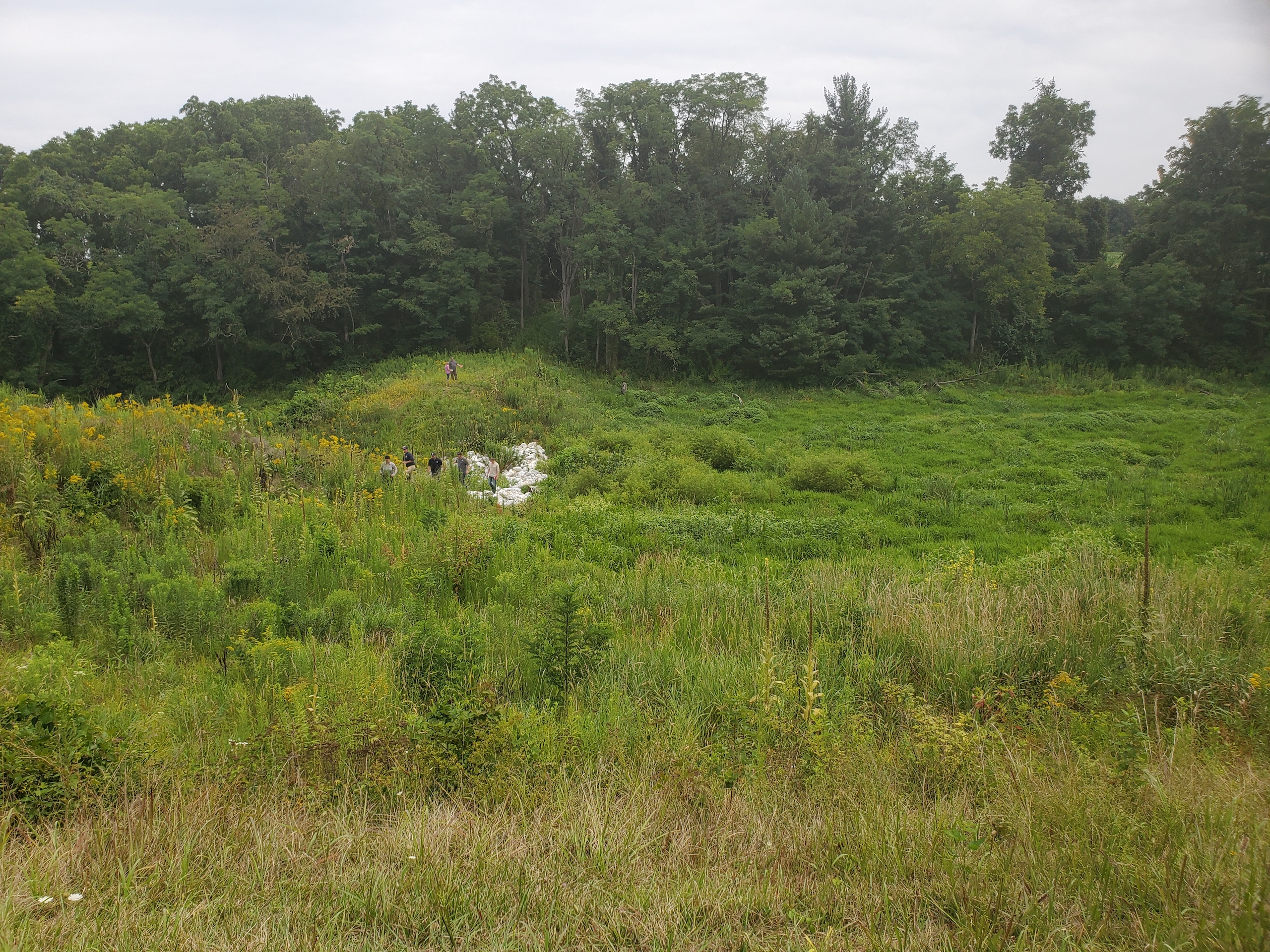
Future Plans
We’re not done yet! We need to give the site some time to restore itself. The river will cut a path (or possibly even more than one) through the impoundment. We need to wait and see if that causes any erosion concerns. We need to make sure the breach stabilizes for the long term. Things will shift around a bit as this is an active evolving natural system. We are also going to explore the potential to do some active wetland or floodplain restoration. The site may not need it. It may restore full functionality on its own. We shall see.
There is also an active stormwater erosion problem happening through the field adjacent to the impoundment that is causing excessive sediment inputs into the stream. Here is an image of the ditch that the inadequate stormwater management from the road has caused through the field. It has a Pierre in it for scale.
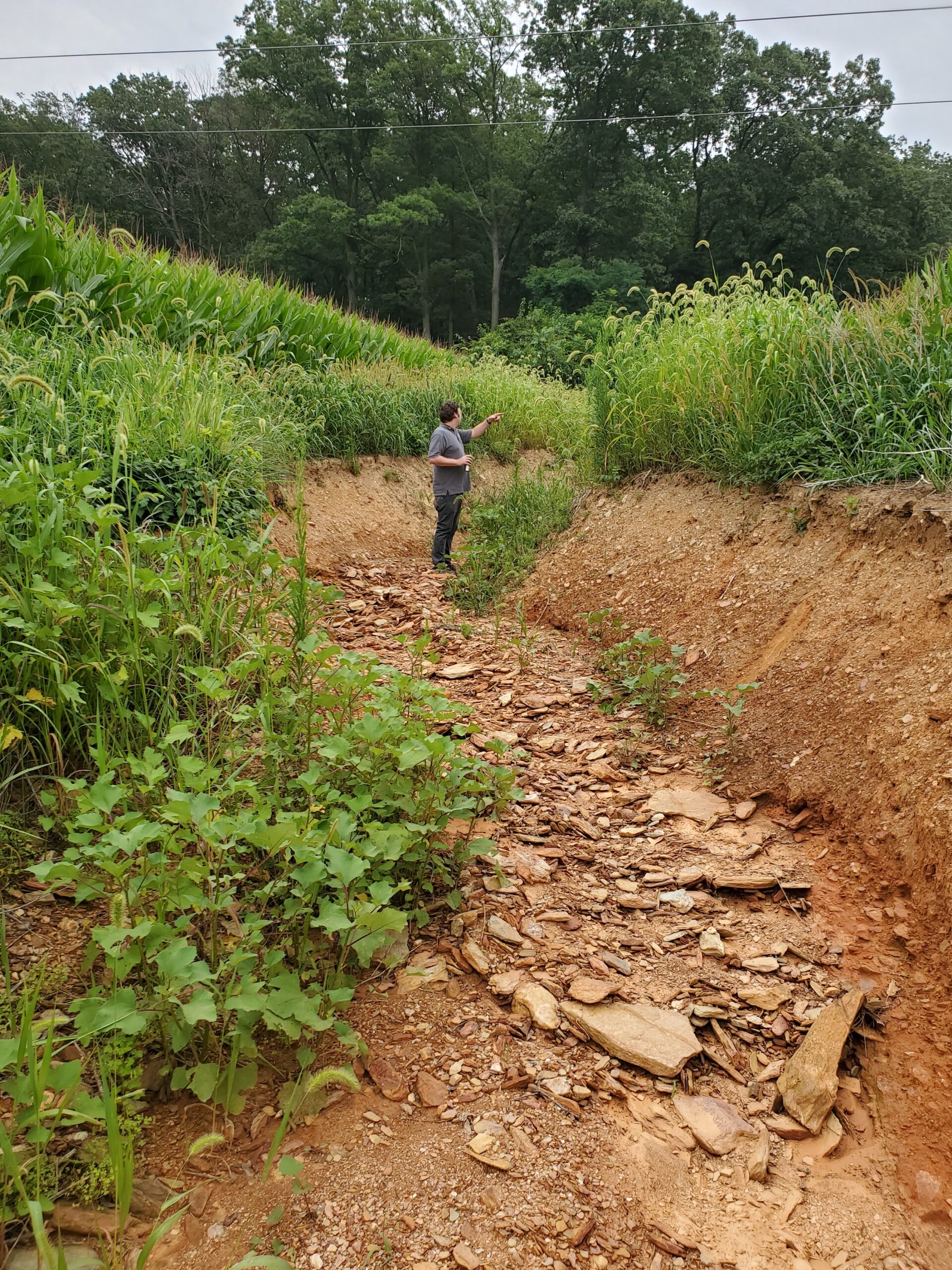
We are hoping to fix that stormwater issue and repair the field as part of Phase 3 of this project. We are also working with local partners to explore the potential of a conservation easement to help keep the surrounding land in agricultural production instead of development.
When PA Dam Safety put a stop to construction in February 2020, I did not immediately know how we would move the project forward. However, thanks to a bit of luck and the engagement of helpful partners, we are making some dam lemonade at this site. I cannot wait to see the results of Phase 3 as we hopefully complete a more holistic restoration of the site for the benefit of people, fish, and wildlife well into the future. Stay tuned!

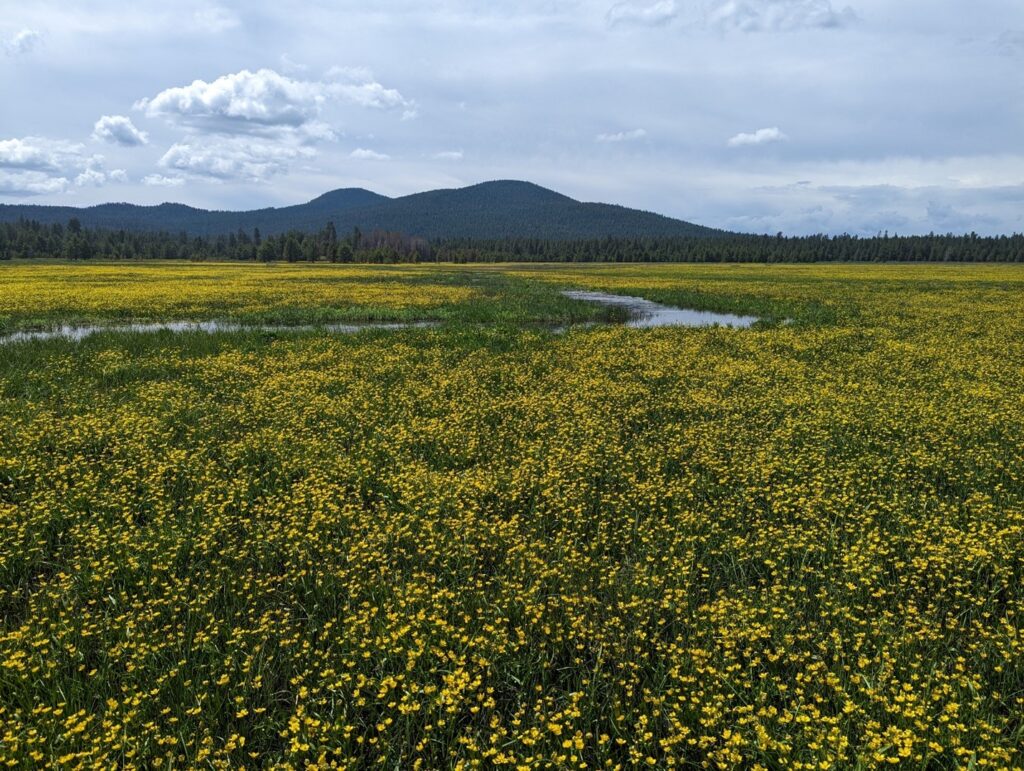

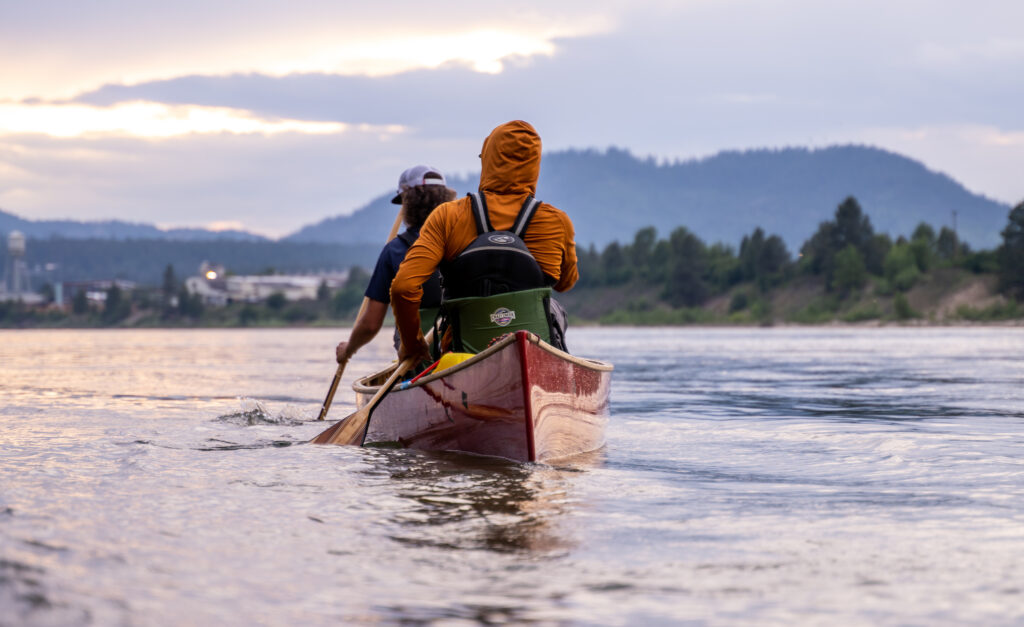
4 responses to “Taking the Lemons and Making Some Dam Lemonade (A Project Journey in Photos)”
I, too, am a member of American Rivers and found the story of Kehm Run dam removal in their newsletter, Source. Thanks to American Rivers and all the people who came together on behalf of Restoring Nature. So pleased to learn another “episode” of how we are interconnected on our Planet Earth, we call Home.
Why did they plug up the pipe under the lake? Has it already been breached and the lake was draining through the pipe.So to keep the lake from draining. they plug the pipe? this lake always had a sediment problem it had already been dredged once In the 70s when Dr. Kehm was still alive. Small islands of sediment were forming on the upstream end because the sediment Problem.
I’m so sad this place is Gone. The fortress of solitude in my childhood it’s so sad the government had to take this away from us.
So glad i’m a member of American Rivers. You never fail to impress.